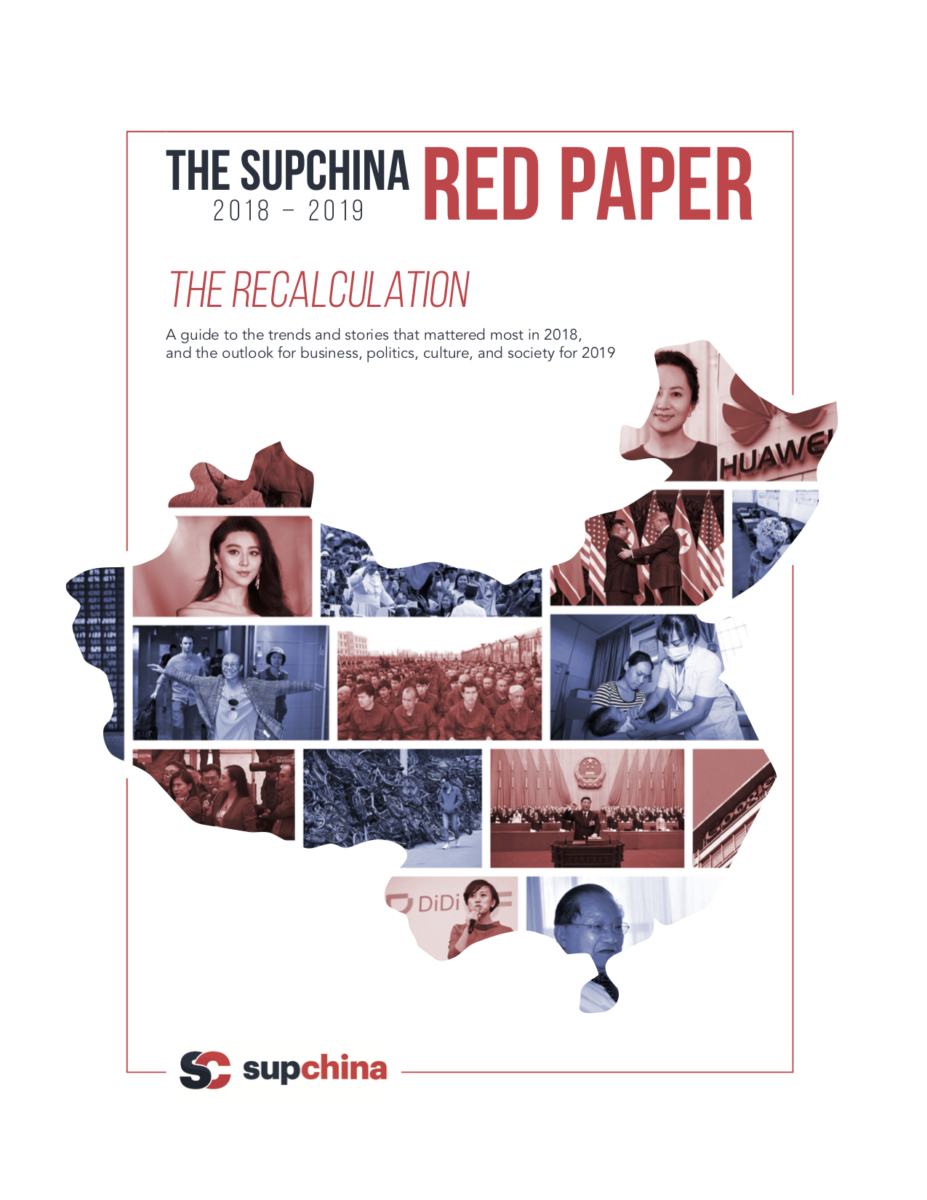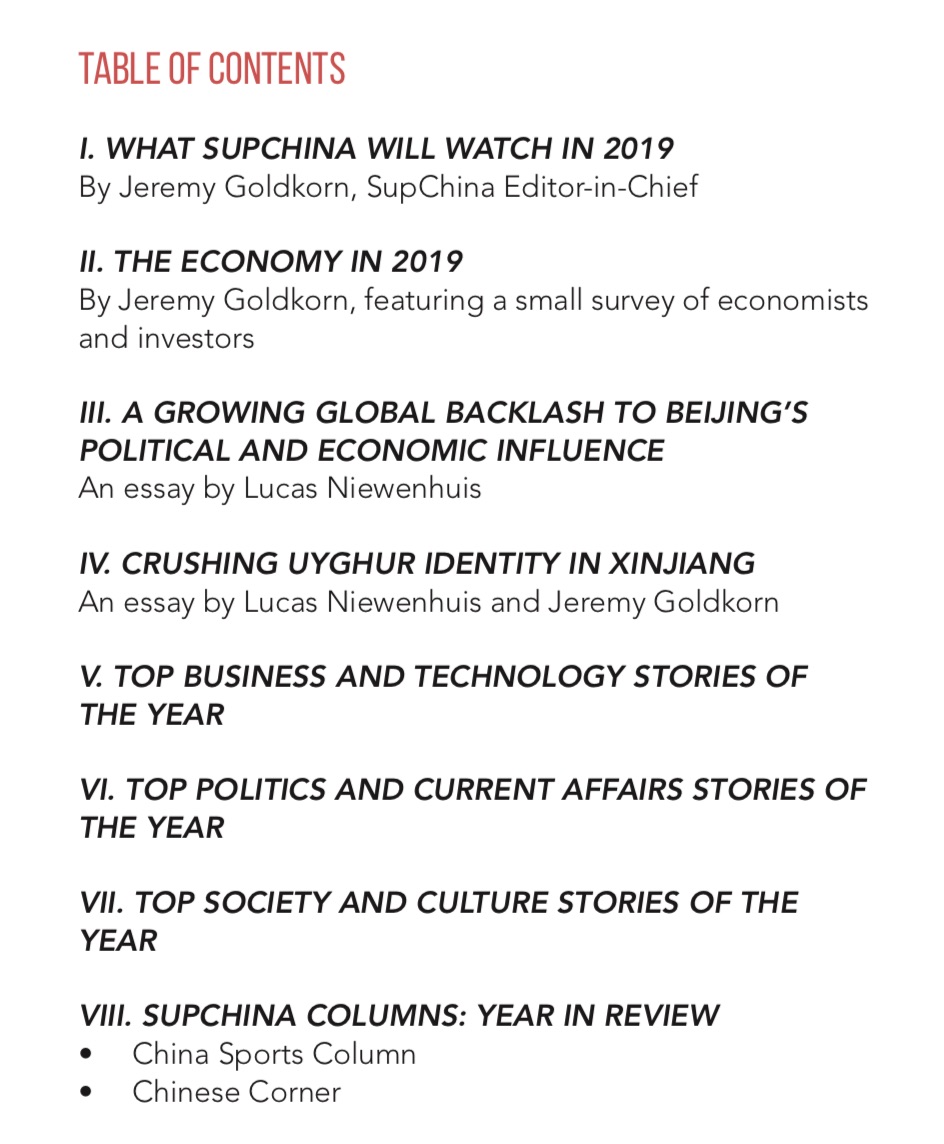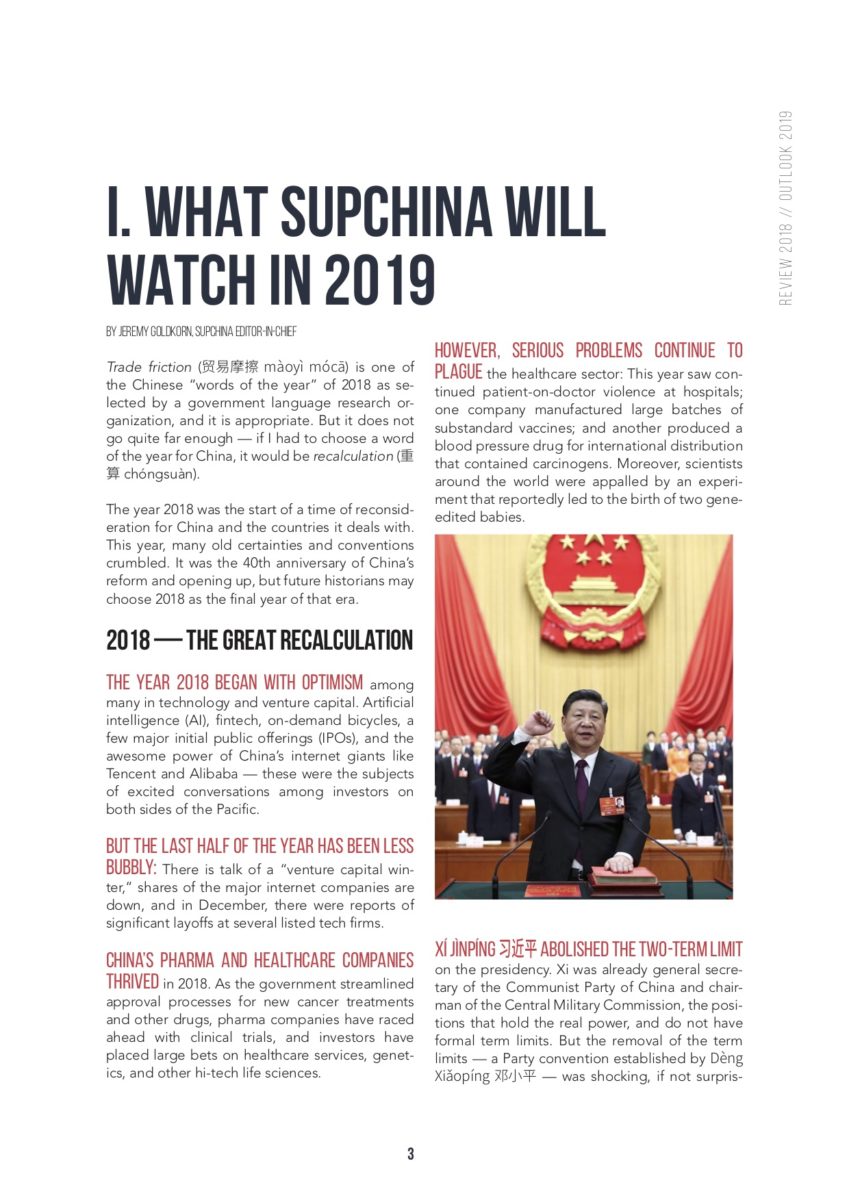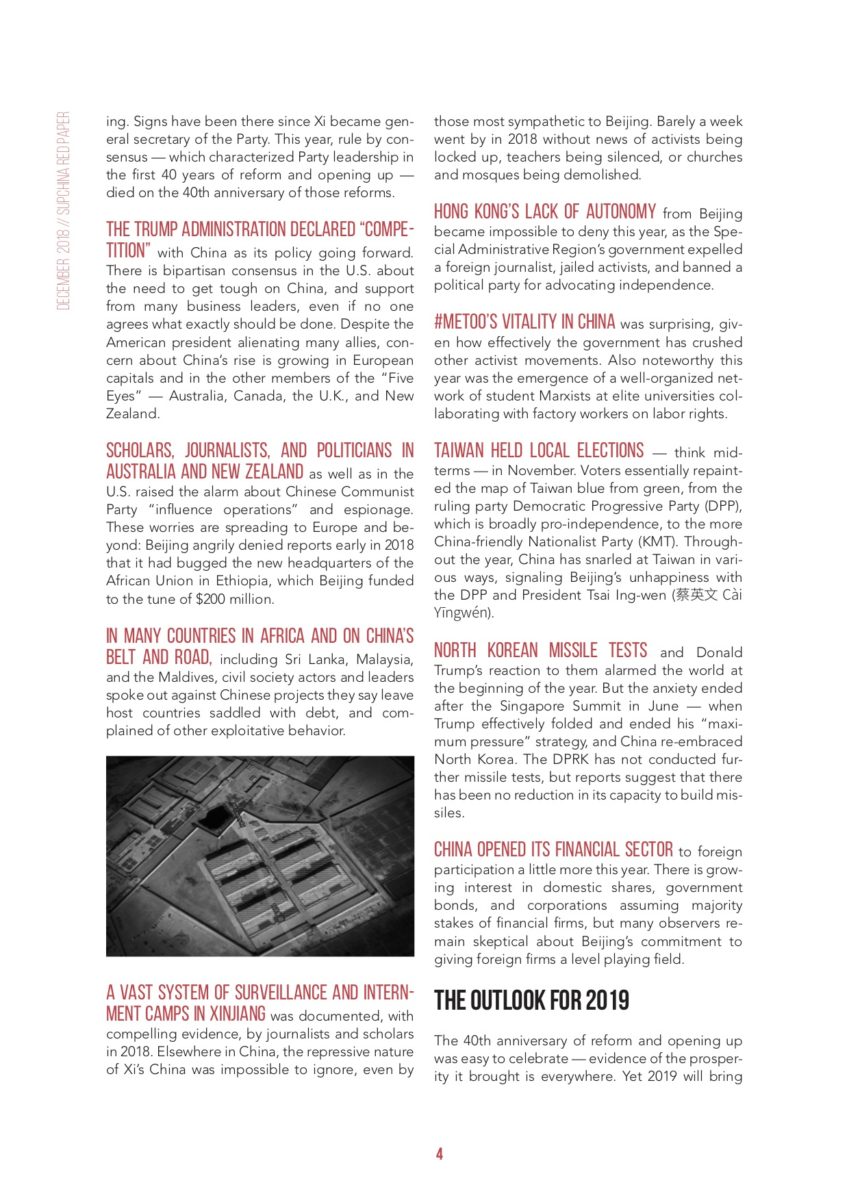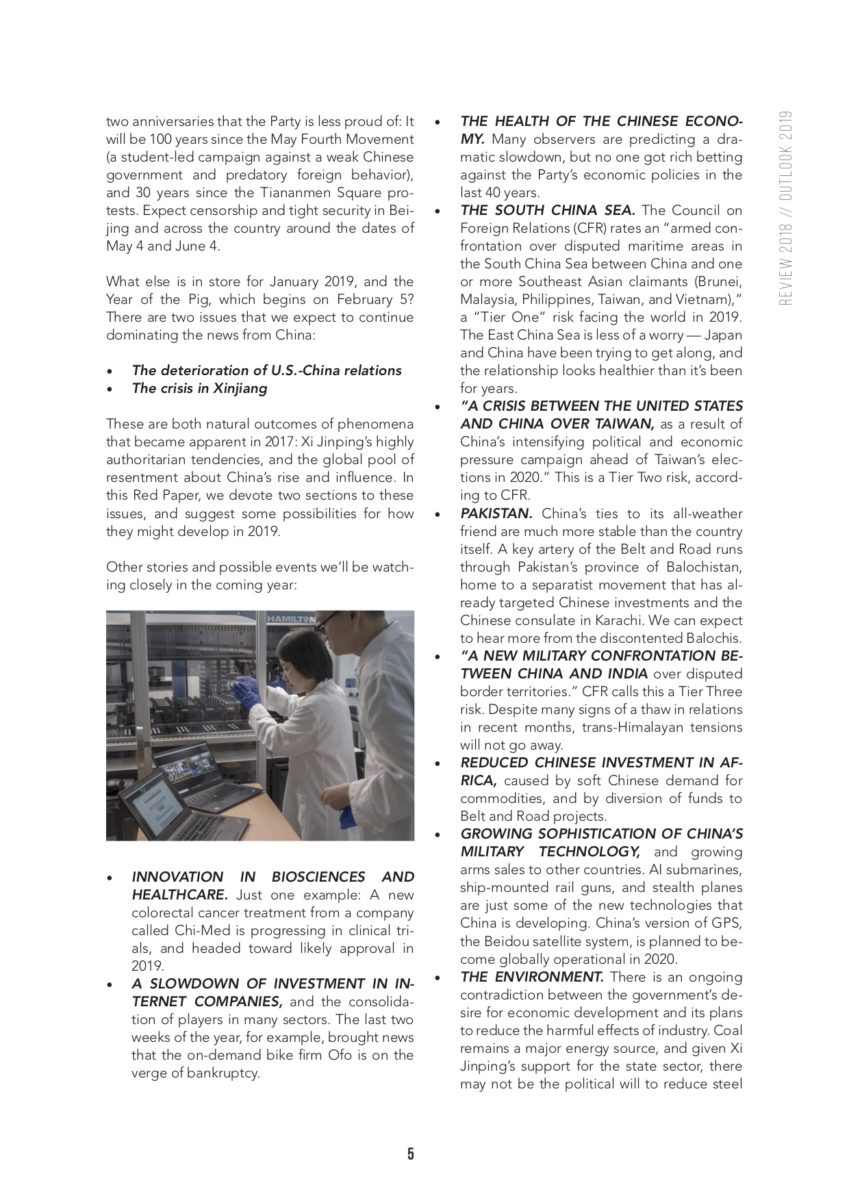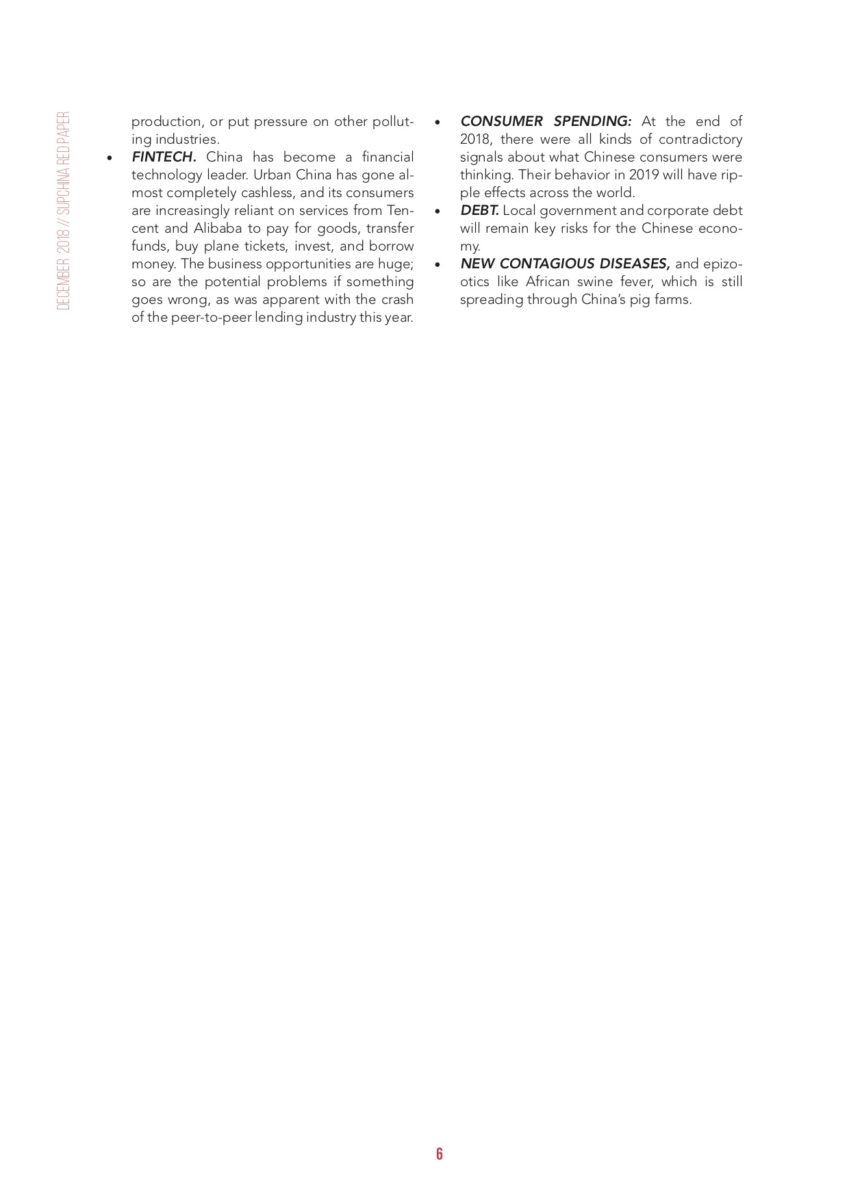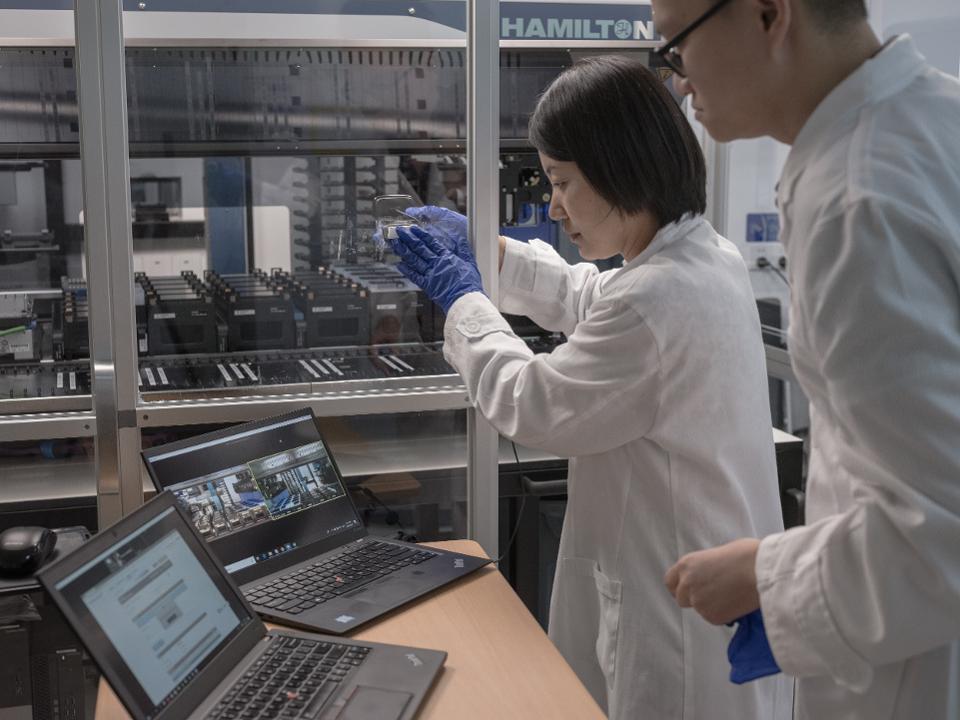The Recalculation: What to watch for in China in 2019
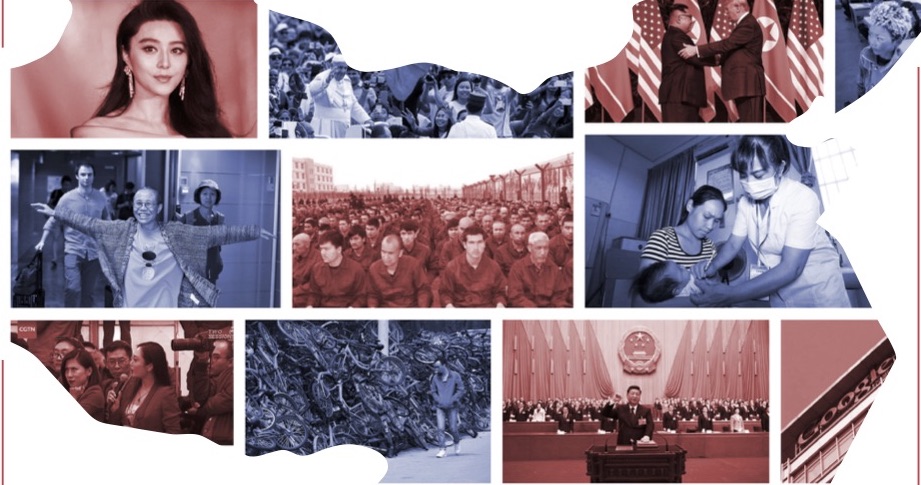
The Red Paper is The China Project’s guide to the trends and stories that mattered most in 2018, and an outlook for business, politics, culture, and society in 2019.
Below is a preview of the Red Paper, in which we look ahead to 2019. Click here to purchase the full 60-page report.
Also see our earlier post: China Year-in-Review, 2018: The Great Recalculation. Excerpt:
Trade friction (贸易摩擦 màoyì mócā) is one of the Chinese “words of the year” of 2018 as selected by a government language research organization, and it is apposite. But it does not go quite far enough — if I had to choose a word of the year for China, it would be recalculation (重算 chóngsuàn).
The year 2018 was the start of a time of reconsideration for China and the countries it deals with. This year, many old certainties and conventions crumbled. It was the 40th anniversary of China’s reform and opening up, but future historians may choose 2018 as the final year of that era.
Click any of the thumbnails below to enlarge
What The China Project will watch in 2019
The 40th anniversary of reform and opening up was easy to celebrate — evidence of the prosperity it brought is everywhere. Yet 2019 will bring two anniversaries that the Party is less proud of: It will be 100 years since the May Fourth Movement (a student-led campaign against a weak Chinese government and predatory foreign behavior), and 30 years since the Tiananmen Square protests. Expect censorship and tight security in Beijing and across the country around the dates of May 4 and June 4.
What else is in store for January 2019, and the Year of the Pig, which begins on February 5? There are two issues that we expect to continue dominating the news from China:
- The deterioration of U.S.-China relations
- The crisis in Xinjiang
These are both natural outcomes of phenomena that became apparent in 2017: Xi Jinping’s highly authoritarian tendencies, and the global pool of resentment about China’s rise and influence. In this Red Paper, we devote two sections to these issues, and suggest some possibilities for how they might develop in 2019.
Other stories and possible events we’ll be watching closely in the coming year:
- Innovation in biosciences and healthcare. Just one example, a new colorectal cancer treatment from a company called Chi-Med is progressing in clinical trials, and headed toward likely approval in 2019.
- A slowdown of investment in internet companies, and the consolidation of players in many sectors. The last two weeks of the year, for example, brought news that the on-demand bike firm Ofo is on the verge of bankruptcy.
- The health of the Chinese economy. Many observers are predicting a dramatic slowdown, but no one got rich betting against the Party’s economic policies in the last 40 years.
- The South China Sea. The Council on Foreign Relations (CFR) rates an “armed confrontation over disputed maritime areas in the South China Sea between China and one or more Southeast Asian claimants (Brunei, Malaysia, Philippines, Taiwan, and Vietnam),” a “Tier One” risk facing the world in 2019. The East China Sea is less of a worry — Japan and China have been trying to get along, and the relationship looks healthier than it’s been for years.
- “A crisis between the United States and China over Taiwan, as a result of China’s intensifying political and economic pressure campaign ahead of Taiwan’s elections in 2020.” This is a Tier Two risk, according to CFR.
- Pakistan. China’s ties to its all-weather friend are much more stable than the country itself. A key artery of the Belt and Road runs through Pakistan’s province of Balochistan, home to a separatist movement that has already targeted Chinese investments and the Chinese consulate in Karachi. We can expect to hear more from the discontented Balochis.
- “A new military confrontation between China and India over disputed border territories.” CFR calls this a Tier Three risk. Despite many signs of a thaw in relations in recent months, trans-Himalayan tensions will not go away.
- Reduced Chinese investment in Africa, caused by soft Chinese demand for commodities, and by diversion of funds to Belt and Road projects.
- Growing sophistication of China’s military technology, and growing arms sales to other countries. AI submarines, ship-mounted rail guns, and stealth planes are just some of the new technologies that China is developing. China’s version of GPS, the Beidou satellite system, is planned to become globally operational in 2020.
- The environment. There is an ongoing contradiction between the government’s desire for economic development and its plans to reduce the harmful effects of industry. Coal remains a major energy source, and given Xi Jinping’s support for the state sector, there may not be the political will to reduce steel production, or put pressure on other polluting industries.
- Fintech. China has become a financial technology leader. Urban China has gone almost completely cashless, and its consumers are increasingly reliant on services from Tencent and Alibaba to pay for goods, transfer funds, buy plane tickets, invest, and borrow money. The business opportunities are huge; so are the potential problems if something goes wrong, as was apparent with the crash of the peer-to-peer lending industry this year.
- Consumer spending: At the end of 2018, there were all kinds of contradictory signals about what Chinese consumers were thinking. Their behavior in 2019 will have ripple effects across the world.
- Debt. Local government and corporate debt will remain key risks for the Chinese economy.
- New contagious diseases, and epizootics like African swine fever, which is still spreading through China’s pig farms.
The Red Paper is available for purchase on our The China Project Shop for $48.88, OR included for free with the purchase of a The China Project Access subscription — from now until January 14, get a year’s subscription at 25% off for just $66, for a total value of over 52% off!
